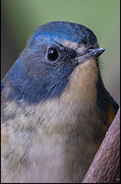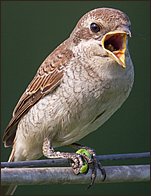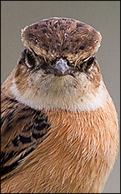

Black and Blue Sage ∞ Salvia guaranitica
3 Dog Acres in rural Washington County, Arkansas
• 25 June 2015
Watercolor by Beau Bosko
By Ebenezer Baldwin Bowles
Posted from Crow's Cottage on 2 July 2015
From my seat in the circle, the stalks of sage rise from their amended bed on the sandstone floor to stand above the twin cottonwood saplings in their cedar box, the cluster of burnt orange coneflowers in their ceramic vault, and the season's second generation of swirling butter-yellow yarrow in their terracotta pot on the northernmost ledge of Doghenge.
I sit, facing north. At midday the norther races toward us from Canada, shaking melodies from the wind chimes. It is said the rains shall fall upon us soon, perhaps in a shower of thunder. Let them come. Let the warm rains come.
Anise-scented sage grows in the wild, we are told, in South American lands. Some nursery folk call it Brazilian sage, but the Spanish or Portuguese for this lanky marvel remain a mystery to me. Here in the heartland of North America, the tender perennial becomes the alien cultivar, propagated by commercial growers to entice the adventuresome gardener. I stand convicted, pray that the native-plant riot squad avoids our hacienda. Don't take away my sage today don't take away my sage.
Although the scent of a broken black-'n-blue sage bloom does not come close to mimicking the aroma of anise, the black and blue shades — ebony and cobalt, indigo and lapis — impart contrast to the more prominent yellows, reds, whites, and oranges of the blossomy summertime palette. They look pretty in the garden.
Enigma
What might we see in the bloom imagined here? How might our pareidolia manifest today? The dragon's mouth? A serpent's head with a slithering, forked tongue? An alien craft bound for London, the make and model arising in fantasy from the mind of H.G. Wells and the filmmakers who transformed his prose into moving imagery?
So what if one of us speaks in riddles.
“Blue Enigma,” the Royal Horticultural Society writes on a byted list of common names for the tender plant. Ainissesthai, a Greek word rooted in the etymological soil of enigma, can lead us to praise God if we follow the trail deep enough. I won't tell ya how … ya gotta find you'rn own way … but there's plenty of room for praise God! here in Crow's Cottage.
But…
if one is not inclined toward pious worship…
then one is liable to find a character by the name of Ainissesthai among a cast of players spawned by Deviant Art practitioners to inhabit the Realm of Dreyrull in the universe of online role playing. Can't say I like that name: Deviant Art. Nevertheless, let it be known that Ainissesthai, perhaps a relic of Pokémon fame, appears most often in the guise of a dragon. No wonder the South American Salvia guaranitica, the cultivar standing tall on Doghenge just now in the early summer rain … roars like a siren.
The rains fell, a half-inch by time of the dark night's arrival, and
Yes, we're all over the place. Our culture encourages us to surf. It's not so easy to stay tethered.
Maybe. Tell me: Is anyone among ye wiser than Socrates?
∞

∞
Defiance
Bluer than deepest ocean
Like cobalt glass in elegant slenderness
The blue sage perfumes the high desert air
With mystery, scent and curiosity
Just alien enough
and different enough
To stir the mind to action
To contemplation and puzzlement
Its rich color defies the
Bright cheerfulness of more native summer blooms
Punctuates the garden with bass notes and
Alien harmonies
And sets brain waves on
A different course
Ripe with fascination
The blue flower, smug in its
Differentness
Fears not the cries of
Strident environmentalist accusation
And blossoms strong in defiance
An immigrant thriving
In this new land
Like most of us, really.
I cheer it on
And wish it well.
Karen Watts
lines written upon reflection of 'Blossomy Enigma'
Waltham, Massachusetts
12 July 2015
Blossomy Enigma was first posted on Thursday, July 2, 2015
Write if you find the time.
ebenezer@crowscottage.com









